Mark Sisson's Blog, page 230
March 4, 2016
From the Struggles of SAD, to the Ease of Primal
It’s Friday, everyone! And that means another Primal Blueprint Real Life Story from a Mark’s Daily Apple reader. If you have your own success story and would like to share it with me and the Mark’s Daily Apple community please contact me here. I’ll continue to publish these each Friday as long as they keep coming in. Thank you for reading!
 I was always chubby, never fat, but really enjoyed desserts as a kid. My parents moved to the US in the 90’s when I was a child, and our diets quickly assimilated to the local SAD diet, which included easily available pizza, deli sandwiches, anything fried, and way too much dessert.
I was always chubby, never fat, but really enjoyed desserts as a kid. My parents moved to the US in the 90’s when I was a child, and our diets quickly assimilated to the local SAD diet, which included easily available pizza, deli sandwiches, anything fried, and way too much dessert.
My parents weren’t very aware of the dangers of sugar. For instance, I would drink chocolate milk in the morning while my parents had coffee, or was given cookies (dunkaroos anyone?) and ice cream every day for snacks. I still remember the blue, red, or green “juice” they would give us in school. This all led to me being a chubby kid my entire childhood. Luckily, I enjoyed karate and sports of all kinds, which helped me offset some of the unhealthy lifestyle.
This changed slightly when my father was diagnosed with lymphoma, and was told that his diet was a big factor. We got rid of refined carbohydrates in the home and increased vegetable and fruit intake heavily. It wasn’t really perfect, but it was definitely a step towards the right direction, which I believe helped my father recover. This turning point in my family’s life forced us to begin looking into how we eat.
When I reached high school, I realized something was off, because I was still chubby. There was a lot of peer pressure regarding looks and weight. I decided to look into health and nutrition purely for aesthetic reasons, and boy, it worked. I became obsessed with the whole “calories in, calories out” concept and ate around 1200-1400 calories a day in the form of protein bars, oatmeal, sandwiches, and fruit, while exercising heavily. It worked. I lost a lot of weight, but didn’t look too great for a 16-year-old, and I was obsessed to the point where I wasn’t doing anything else but tracking my daily food intake and exercise. I seemed sickly, and I never had any energy! Back then I thought it was all worth it to look great, but I wasn’t feeling well at all.

As you may have guessed, I couldn’t keep this up. Eventually, I caved in and started eating a bit more, because I couldn’t keep up starving myself. Just the slight increase in food intake made me gain weight like crazy! Eventually, I found myself 40 pounds heavier by eating the same amount of food that everyone around me was eating. I was so confused! To make it worse, I was a fitness instructor in the Israeli Army at this point, and I was not a good role model at all. It was extremely difficult, mentally, for me because I was fit but at the same time, overweight. I could run a 10k rather easily, although I didn’t look like I could. I didn’t understand.
Until, one day on guard duty, I came across Mark’s site while browsing on my phone. I still don’t know how I got to it, but when I did, I spent my entire 4-hour shift reading everything I could. It was so intuitive and so logical that I knew I had to try it! I even brought my boyfriend on board and results were too good not to share. I stopped starving myself! We started rock climbing and hiking! Every day was a day to look forward to. We are so ecstatic to be where we are today!
What’s interesting about my personal success story, however, is that I truly feel I put in a minimal amount of effort. When I was starving myself and over-exercising, every day was arduous and a struggle. With a primal lifestyle, I eat wonderful foods, create delicious dishes, exercise with so much energy, and enjoy every day! It comes so easily and intuitively! Sometimes we feel guilty because everyone makes it seem like being healthy is supposed to be difficult. Primal taught me otherwise!
Thanks, Mark, for your desire to spread free information to anyone and everyone all over the world. You are an inspiration, and you changed our lives.





March 3, 2016
7 Primal Ways to Be a Better Leader
 Everywhere you go these days it seems like there’s big talk about leadership. Schools build curricula around it. Businesses feel the need to train their employees in it, including those who aren’t in management roles. Whereas leadership used to be seen primarily as a function, it’s now touted as a virtue. We’re told everybody should want to be one and is, of course, in need of whatever x, y, z leadership program is being sold that day. I guess I see both sides of the coin here. While I think pushing leadership ad nausea demotes other equally valuable skills and roles like the specialist and artisan (among others), I also believe there’s purpose in cultivating a deeper command of one’s own life and in understanding how to bring self-management to bear in leading others.
Everywhere you go these days it seems like there’s big talk about leadership. Schools build curricula around it. Businesses feel the need to train their employees in it, including those who aren’t in management roles. Whereas leadership used to be seen primarily as a function, it’s now touted as a virtue. We’re told everybody should want to be one and is, of course, in need of whatever x, y, z leadership program is being sold that day. I guess I see both sides of the coin here. While I think pushing leadership ad nausea demotes other equally valuable skills and roles like the specialist and artisan (among others), I also believe there’s purpose in cultivating a deeper command of one’s own life and in understanding how to bring self-management to bear in leading others.
The thing is, most “rules” you’ll read for improving your leadership skills focus on other people—how to understand them, how to persuade them, how to manage them, how to move them the way you want to go. While modern social organization is a far cry from our hunter-gatherer roots (and at times requires different skills), there’s something essential and timeless in the model of primal era leadership. It’s a case where cutting edge management strategy can add to but not replace enduring principle. See what Primal leadership principles speak to you.
As I often mention, most experts believe that true (i.e. “simple”) hunter-gatherer groups mostly lived in small, egalitarian style bands, which were ever shifting in their memberships at any given time. People moved within and without at will, and generally speaking there was peace between bands. Given the egalitarian organization members actively guarded in their societies and given the immediate return economy (which meant there was little to no food or other resources to be stored or fought over), “supervisory” leadership wasn’t relevant or necessary as we think of it today.
Theirs was, as far as we can know, largely a shared leadership and horizontal social structure. The band’s cohesion wasn’t held together by a central authority but by elaborate kinship codes that guided people’s behavior and served as a template for assessing conflicts. Within this shared value system, communication and consensus ruled.
While all members took responsibility for the band’s solidarity and functionality under this system, there sometimes were hunter-gatherer societies in which a leader was chosen whose authority was very limited—perhaps only to guide the group through a particular situation. Contrary to what the modern mind would think, these weren’t the strongest or boldest members but often the most modest even if they were also people with a particular skill relevant to the occasion.
Over time, certain groups like the Aborigines developed laws of conduct and leadership in the form of sacred stories, which were transmuted by shamans. Rather than directives, they could be cautionary tales. One such example was a story known as the Black Swan, which warned of the use of fear and manipulation with others, the denying of responsibility, indulging in conflict and blame and abandoning others in search of individual gain.
What can we, however, glean from all this? Can we take what research tells us about the roughly prevalent hunter-gatherer model of leadership and decipher lessons for modern management? I tend to think so.
Here are what I’d consider 7 Primal ways to be a better leader….
1. Cultivate humility.
Humility was a penultimate priority for leadership. At risk was the sacred egalitarian code members carefully guarded for their mutual best interest. These days humility is a rare quality.
The fact is, real confidence isn’t about pomp or aggression. You’ve likely met people in authority who push their agendas, leave no room for discussion or correction and often take everything personally. These people can be miserable to work for, and most of them are probably miserable period.
Real confidence is the outgrowth of humility. It’s about being solid in yourself while also open and discerning toward the gathering of evidence and the voices of others.
Make no mistake. Genuine humility isn’t weak or insecure. It’s rooted in a knowledge of and comfort with one’s self, which is the best security anyone can count on and the most effective leadership quality, since it comes with its own checks and balances.
2. Develop a meditative or mindfulness practice.
Sure, there are health benefits to both, but there’s a different reason behind my suggesting this here. When it comes to leadership (even if it’s just about being a more conscious leader of your own life), a regular meditative or mindfulness practice encourages you to open to and hone your intuition. Bringing regular, perceptive awareness to your feelings—both your emotional reactions and your momentary instincts—will help you tap into the gut sense that can guide your leadership (and life) decisions.
Good leaders might know how to organize and keep the lid on the pot. Great leaders know how to move it all forward and where to direct their actions. They are ruled more by inspiration than order, and that flows from a keen sense of personal intuition.
3. Learn to listen and to sit with feedback.
We’ve all spent time with someone who chronically interrupts and impatiently jostles a conversation with all the darting erraticism of a pinball. (There’s a crucial difference between intensity and impatience.)
In researchers’ accounts of hunter-gatherer societies, decisions were made by consensus and often could take weeks if not months. Members would share a loose thought about the issue at hand and let it settle. On another day a different member might share a consideration. Over time, the collective energy flowed toward a given choice, and it felt natural when the decision was made official.
While most of us don’t operate with the luxury of this kind of time table, we can make the conscious decision to slow down, to invite extended discussion (i.e. more than one occasion) and to truly honor—rather than just ceremoniously entertain—outside views.
4. Accept that it’s not about you.
Related to the above point is the acknowledgment that a leadership position isn’t about your ego (or shouldn’t be). As in Grok’s day, situational or (rarer) ongoing leadership wasn’t ever about the particular individual. Lineage might have had some influence. Special skill, particularly for the immediate circumstance, might have played a role.
That said, leaders were chosen by the collective whole to serve the good of that collective whole. Furthermore, leadership was highly circumscribed, meaning there were significant limitations on the power of that person. “Leadership” was much more diffuse and representational than we consider it today. Whereas we think of supervision and imposition in our leaders now, in Grok’s day a leader’s job was more about support of the traditional process and group interest and not about a personal agenda.
Whose good are you pushing? Is it the good of the organization you’re leading and larger interests—or is it service to the self-image? (Too few seem to ask this relatively obvious question.) It’s where leaders often get sucked into controlling people and outcomes. From there they too often sacrifice the good of the organization and those it reaches as well as their integrity, ironically losing themselves as they take the process in addition to the outcome personally.
5. View your leadership as temporary.
Leadership in hunter-gather groups was often situational (i.e. temporary). In matters where guidance was needed, the person chosen played a restricted role in moving the group through certain circumstances and then promptly and modestly stepped down.
This relates closely to the point above, but it’s worth giving it its own space. When we think of our leadership as temporary (even when we’re talking about something so ongoing and fundamental and leading a family), we appreciate that we’re acting as stewards rather than owners. It’s a different mentality that lends itself to thinking in the best interest of the organization and those involved rather than just one’s self.
6. Be a visionary.
Too many people associate leadership with power rather than vision. Power is about control for control’s sake. It encourages imposition and values a few over many. A great leader holds space for the vision and invites others into that space.
Look at organizations where leaders focus on power versus those where leaders lead through vision. (Richard Branson is good example here.) Leaders who literally lead rather than just manage are there in the thick of their business. They’re excited about what they do, and that enthusiasm inspires others.
7. Tap into a core purpose.
Leaders and shamans who didn’t lead per se but often had a separate status in hunter-gatherer groups, were seen as guardians of the sacred stories. While a company doesn’t probably have a sacred story, it should have a core purpose—and a narrative that can stir those who work for that purpose and those to whom it seeks to advertise that purpose.
Offer people rules and queues and directives, and in most cases you’ll get compliance. Offer them a purpose and the chance for investment in that vision, and you’ll often get a deeper commitment and a more interesting contribution.
Thanks for reading, everyone. I’d love to hear your thoughts on Primal views of leadership. Share your comments, and enjoy the end to your week.




March 2, 2016
Top 14 Ways to Increase Your Metabolism
 On a literal level, your metabolic rate describes how much energy you expend to conduct daily physiological functions. This has many practical ramifications, however, because your metabolic rate also influences how you feel, how many calories you burn, how many calories you can eat without gaining weight, your libido, your fertility, your cold tolerance, how much subjective energy you have, how you recover from injuries and stress, how specific foods affect you, and how you perform in the gym. In short, it’s usually a good thing to have a higher metabolic rate.
On a literal level, your metabolic rate describes how much energy you expend to conduct daily physiological functions. This has many practical ramifications, however, because your metabolic rate also influences how you feel, how many calories you burn, how many calories you can eat without gaining weight, your libido, your fertility, your cold tolerance, how much subjective energy you have, how you recover from injuries and stress, how specific foods affect you, and how you perform in the gym. In short, it’s usually a good thing to have a higher metabolic rate.
Here are a few ways to increase your metabolism in a healthy, productive manner.
1. Optimize your thyroid health.
The thyroid is the primary regulator of metabolic rate. To increase the latter, we must support the former.
Certain nutrients play huge roles in thyroid function, like iodine (to create thyroid hormone) and selenium (to convert it to the active form). Make sure to eat your seaweed and Brazil nuts.
Many thyroid conditions are autoimmune in nature, so focus on avoiding common autoimmune triggers like wheat and other grains, strengthening your gut barrier, and keeping your gut healthy with prebiotics and probiotics.
An excessive intake of cruciferous vegetables may have goitrogenic (thyroid-suppressing) effects. Don’t be afraid of broccoli and kale, but don’t eat several pounds a day.
If you’re low-carb, note that going too low in calories can depress thyroid function. There’s some evidence this may be adaptive and have beneficial effects on longevity to a point, but you don’t want to depress it so much that you’re cold all the time, constantly exhausted, and can’t seem to lose any weight. If you’re feeling that way on low-carb, up the calories (whether they come from carbs, protein, or fat).
If you’re legitimately hypothyroid, don’t be afraid to treat it. Sometimes supplemental thyroid is the right answer, and it’s less “modern” than you might think; traditional cultures used to supplement with animal thyroid gland.
2. Eat enough calories.
Inadequate calorie intake sends a signal of famine to your body. There are varying degrees, of course—400 calories a day sends a very different signal than 1200 calories a day—but any deficit will be perceived as a stressor, however minor. That’s okay. Stressors are important and part of the benefit comes from our response to them. But in the face of continued and constant low calorie intake the body tends to depress the metabolic rate to match the amount of energy coming in. This slows weight loss, if not halts it altogether, and explains why many people feel tired, cold, and miserable on extended dieting.
3. Mind your leptin.
Leptin is a major determinant of metabolic rate and energy expenditure. Since it’s secreted by body fat and responds to a lesser degree to your carb intake, using a low-carb diet to lose body fat may eventually, paradoxically, work against your metabolism. You can fix this by incorporating carb refeeds once or twice a week where you keep the fat low and carbs high to give lagging leptin levels a boost. Other potential fixes include avoiding grains, whose lectins may interfere with leptin receptors.
4. Sprint.
I always say that sprinting is the single best exercise for leaning out. Compared to resistance training and traditional cardio, sprint intervals increase resting energy expenditure the most. Most of the increased expenditure appears to come from fat oxidation. Best of all, the increased expenditure following sprinting does not lead to increased food intake.
Furthermore, sprinting turns your muscles into glycogen sponges, so the carbs you eat to increase leptin and metabolism will be shunted toward the muscles.
5. Lift heavy things.
Strength training is essential for increasing your metabolic rate for three primary reasons:
Lifting heavy things builds muscle. Muscle is costly. It craves energy. It needs energy. It burns energy. It upregulates metabolism simply by virtue of its existence.
The immediate act of lifting heavy things is metabolically intensive. Hoisting heavy objects, whether barbell, rock, or bodyweight, requires energy in the moment.
Strength training increases resting metabolic rate over the short and long term. A good strength session even upregulates metabolic rate for hours afterward.
6. Eat spicy food.
Capsaicin, the spicy compound in chiles, has thermogenic qualities. It activates metabolically-active brown fat, which could reduce body fat. Combined with exercise, it increases energy expenditure. Combined with food, capsaicin increases the thermic effect of a meal (the amount of energy burnt during digestion). Don’t expect a miracle here. But little changes add up. Besides, spicy food—if you’ve got the taste for it—is delicious.
7. Eat at regular times.
Some people thrive on an erratic eating schedule. For some people, an erratic eating schedule depresses metabolism bccause their bodies “expect” food at specific times. In one study, healthy lean adults experienced a lower thermic effect of food—the extra burst of energy required to process and digest the food we eat—when they ate according to a disordered, erratic schedule. The same effect happened in overweight women trying to lose weight. Reduced thermic effect of food means lower energy expenditure and lower metabolism.
8. Expose yourself to cold.
To stay warm in cold environments, humans do several things that all involve increasing one’s metabolism. We shiver, which burns calories to maintain body temperature. We activate brown fat, a type of body fat that burns energy and increases metabolism rather than stores and blunts it. The more cold adapted you are, the more you rely on brown fat to stay warm.
It’s not necessary to take ice baths. Simply leaving the heat off in the house and going outside in short sleeves during cold weather will increase your energy expenditure.
9. Eat the carbs you earn.
If you have “earned the carbs” through heavy training, choose not to eat them, and continue to perform demanding work in the gym, your metabolic rate will suffer. A CrossFitter isn’t doing him or herself any favors by failing to restock glycogen stores after heavy WODs; this will exacerbate the energy deficit and introduce a metabolism-depressing starvation response.
10. Eat more protein.
Protein has the highest thermic effect of all the macronutrients, meaning it takes the most calories to digest and results in an higher energy expenditure. That it helps build thermogenic tissue—muscle—doesn’t hurt, either.
11. Manage stress.
Acute stress seems to incease metabolic rate, probably by increasing adrenaline and cortisol. But in the context of chronic stress, where cortisol is chronically elevated and less stimulating, metabolic rate may drop. That could explain why women who report experiencing more “stress events” have a lower thermic response to food they eat. That’s chronic stress, and it’s far more damaging than acute stress, which we can and do recover and even benefit from.
12. Stand more than you sit.
Direct comparisons find that people who use standing desks have higher energy expenditures than people who sit.
13. Move frequently throughout the day (fidgeting counts).
Non exercise activity thermogenesis (NEAT) is an undervalued path to increased metabolism. That guy in your office who rocks back and forth in his chair, constantly cranes his neck around to look at everyone else, chews gum incessantly, takes frequent trips to the bathroom, and never seems to sit still may be nursing a crystal meth habit, or he could just be a high-energy guy with an elevated metabolic rate.
14. Drink coffee or tea.
Whether you’re obese or of normal weight, drinking coffee increases your metabolic rate. The increase, mediated primarily by a boost to fat metabolism, is transient, but before you know it’s morning again and you’re ready for another cup (or three).
Tea works, too. It’s got caffeine (albeit not as much as coffee) and, if you’re drinking green tea, specific compounds that promote energy expenditure independent of caffeine.
Those are 14 tried and true ways to increase your metabolism over both the short term and the long term. I’m sure there are others, too. What have you guys got?
Thanks for reading, everyone!




March 1, 2016
The Biggest Paleo Event of the Year: Paleo f(x) 2016!
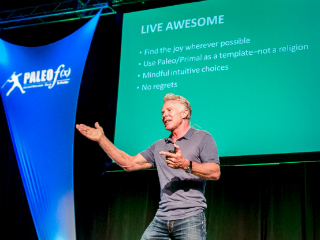 Paleo f(x), my favorite holistic health and fitness event in the world, returns to Austin May 27-29, 2016! In case you missed it the last 4 years, Paleo f(x) is the Who’s Who gathering of the ancestral health movement. I’ll be giving some talks, and you’ll also be getting deep inside the brains of other world-class speakers including New York Times bestselling authors, physicians, scientists, athletes, health entrepreneurs, fitness professionals, biohackers, and more. Robb Wolf will be joining me, along with Chris Kresser, Melissa Hartwig, Dallas Hartwig, Dr. Sarah Ballantyne, Dr. Kellyann Petrucci, Ben Greenfield, Dr. Jonny Bowden, Aubrey Marcus, Emily Schromm, and dozens upon dozens more. You can register for the event and see a full list of speakers here.
Paleo f(x), my favorite holistic health and fitness event in the world, returns to Austin May 27-29, 2016! In case you missed it the last 4 years, Paleo f(x) is the Who’s Who gathering of the ancestral health movement. I’ll be giving some talks, and you’ll also be getting deep inside the brains of other world-class speakers including New York Times bestselling authors, physicians, scientists, athletes, health entrepreneurs, fitness professionals, biohackers, and more. Robb Wolf will be joining me, along with Chris Kresser, Melissa Hartwig, Dallas Hartwig, Dr. Sarah Ballantyne, Dr. Kellyann Petrucci, Ben Greenfield, Dr. Jonny Bowden, Aubrey Marcus, Emily Schromm, and dozens upon dozens more. You can register for the event and see a full list of speakers here.
I had such a great time rubbing elbows with thousands of like-minded Primal/Paleo enthusiasts at last year’s Paleo f(x). The Palmer Events Center featured all the biggest companies in the ancestral health sphere along with over 30 expert speakers. Overall, there wasn’t a dull moment, an empty belly, or a lack of enthusiasm among the pop-up community of Primal/Paleo attendees.
2016 promises to be even more of a thrill. The event features:
Keynotes: Be empowered and inspired by the thought leaders of the wellness movement at the keynote stage talks.
Mastermind Panels: Go deep at the Paleo f(x) masterminds, where expert panelists cover nutrition and health, strength and conditioning, and everything in between.
Workshops: Work live with coaches and fitness experts at the small group expo floor workshops. Master your squat, conquer your kettlebell swing, or have fun at a “Primal Playout.”
Cooking Demos: Learn new mouth-watering Paleo recipes, up close and personal with your favorite bestselling cookbook authors and foodie bloggers.
Paleo On Ramp: The special beginner-friendly stage has “Paleo 101” level talks that gently introduce you to real food and optimal living.
Health Expo: Discover an array of health-conscious, paleo-friendly companies and sample delicious foods on the expo floor.
Paleo f(x) FitScore: What is your overall fitness level? Accurate, cutting-edge, and safe, The Paleo f(x) Fit Score was designed by experts, and certified by realFit, to help you answer this question.
Book Signings: Meet all your favorite authors and speakers at book signing meet and greets.
Networking: Connect with entrepreneurs, creatives, and other passionate “builders” in the Paleo f(x) networking lounge. Includes special guided networking sessions for bloggers, fitness professionals, and health practitioners.
Awards Show and Social Events: Celebrate the community at the Paleo Magazine Awards, powered by Paleo f(x), on Saturday night. And make new friends during the many Paleo f(x) social opportunities.
I’ll also be walking the ground floor for the entire event, so it’s a great chance for us to meet.
Paleo f(x) takes place at the Palmer Event Center, a premier space in downtown Austin, adjacent to the city’s best food, music, and culture. Last year our primal presence filled the streets, pervading every corner of Austin for the weekend.
Tickets have sold out in 2013, 2014, and 2015, so be sure to register today!
You can also learn more about why to attend.
But that’s not all. If you’re a health entrepreneur—a business owner, author, or paleo practitioner looking to broaden your impact—then I encourage you to check out Health Entrepreneurs f(x), a one-day mastermind event that brings together leading health and wellness entrepreneurs for deep discussions on elevating your stake in the paleosphere. It takes place on May 26th and includes:
Short talks in the morning
Comprehensive small group discussions in the afternoon
Note takers, so you go home with copious notes from all the small speaker-led groups
Paleo-friendly catered lunch and dinner
Complimentary Paleo f(x) Soiree ticket
A private Facebook group so you can continue to strengthen the connections made
You’re getting a day’s worth of VIP access to the most knowledgeable, influential folks in the biz. So the ticket price is well worth it.
Tickets are limited to just a few dozen participants, so if interested, sign up for Health Entrepreneurs f(x) today.
I look forward to seeing you in May!




February 29, 2016
Dear Mark: Grass-Fed vs Grain-Finished, Lamb Feedlots, and What About Grass-Fed Eggs?
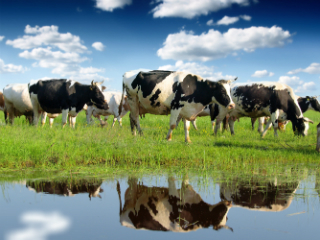 For today’s edition of Dear Mark, I’m answering a few questions about grass-feeding several of you raised in last week’s comment section. First, is there a difference between grass-fed and grass-finished?What is the difference between grass-fed and grass-finished? Next, is it true that lamb is by definition grass-fed? Are there actually lamb feedlots, or can we be certain that the lamb we eat lived a fairly decent, grassy life? And finally, what about grass-fed eggs? Does such a thing even exist? After all, when most of us think about happy egg producers, i.e. fowl, are they munching away on their fair share of freshly sprouted greens?
For today’s edition of Dear Mark, I’m answering a few questions about grass-feeding several of you raised in last week’s comment section. First, is there a difference between grass-fed and grass-finished?What is the difference between grass-fed and grass-finished? Next, is it true that lamb is by definition grass-fed? Are there actually lamb feedlots, or can we be certain that the lamb we eat lived a fairly decent, grassy life? And finally, what about grass-fed eggs? Does such a thing even exist? After all, when most of us think about happy egg producers, i.e. fowl, are they munching away on their fair share of freshly sprouted greens?
Let’s find out:
Is there a difference between Grass-Fed and Grass-Fed/Grass-Finished?
Until recently, “grass-fed” meant that the meat was USDA-certified 100% grass-fed and finished. But in January, the USDA stopped verifying that meat advertised as grass-fed is actually grass-fed, instead urging producers to come up with their own standards. Until that happens, producers can slap the label on however they like. And sure, most cows do spend the first part of their lives on pasture before moving to the grain feedlot, but the label simply doesn’t tell us anything definitively anymore. Legally. I imagine that most beef with the grass-fed label is indeed grass-fed, at least primarily. But there’s a lot of wiggle room.
If you’re at all in doubt, dig down deep. That’s the beauty of having a smartphone in your pocket when you shop. You can look at the package, get the name of the farm (or ask the butcher or manager for the name), google it, and discover how the farm feeds their animals or get contact info so you can inquire yourself.
Grass-fed means just that: the cow ate some grass during its life. It may have eaten nothing but grass. It may have eaten a little grass and the rest grain. It may have eaten mostly grass and then spent a few weeks or months on grain to fatten up. Most cows are technically “grass-fed,” because most cows start out on pasture before moving to the feedlot.
Grass-finished means the animal ate only grass and other stuff throughout its life: hay, silage (kind of a fermented grass), forbs (herbaceous flowering plants that are not grasses), vegetative grains (grains that look more like grasses, before they become the grains we know), browse (random vegetation that’s neither forb nor grass), and crop residue (one of my favorite beef ranchers gave his cows leftovers from the vegetables he grew).
Grain-finished means the animal was moved onto grains after. It can last for the better part of a year or for just a few weeks. The longer a ruminant spends on grain, the more grass-based benefits are abolished from the meat. You don’t go from grain to grass, typically. Maybe there’s some weirdo out there starting his calves on corn and moving them onto grass for finishing, but I highly doubt it.
Isn’t lamb, by definition, grass-fed? That was my understanding and I’ve never heard anything about sheep feedlots. If you like lamb, it makes it easier to get grass fed meat on your regular grocery store run. Not quite the same as beef, but you can do a lot of tasty meals with lamb even with picky eaters.
That’s a common misconception. I wish it weren’t. I wish lamb were raised exclusively on grass and wild forage. They’re suited for it. They thrive on it. And yes, a large portion of lamb are grass-fed for their entire lives, and lamb is more likely to be grass-fed than beef, but not all of them. It ultimately depends where you get your lamb.
New Zealand lamb: 100% grass-fed. If a drought occurs, they may have to provide hay, but even that is just dried grass so it qualifies.
Australian lamb: The marketing page for Aussie lamb says the country’s animals “graze on natural Australian grasslands throughout their lives” and are only supplemented with grain “if a regional drought occurs.” And it appears to be true, for the most part. But according to the department of agriculture in Victoria, Australia, intensive feedlot feeding of lamb is “steadily increasing” to meet the growing demand for “lambs that meet market specifications.” There are definitely lamb feedlots, as the Australian article discusses the benefits and drawbacks of different types of lamb feedlots.
Icelandic lamb: 100% grass-fed, from what I could gather.
American lamb: Except for those “marketed directly from the pasture,” most American lamb is finished with grain. Feedlots absolutely exist. In my experience, smaller producers of lamb, the guys you’ll see hawking their wares at the farmer’s markets, produce exclusively grass-fed lamb. Just ask to be sure.
What about eggs?
Eggs are a little different. Chickens may nibble on grass. They’ll peck at it. They’ll enjoy the occasional lawn salad, absolutely. But they are omnivores through and through. They need denser sources of protein. So “grass-fed” is a misnomer.
Free-range is like “grass-fed”; it doesn’t mean much. A free-range chicken might get a little patio bereft of plant and wildlife outside the hen house to scratch around in. But it’s eating the same stuff the battery-raised chickens eat: corn and soy.
With access to grasses, weeds, and all the delicious invertebrates that populate such an environment, pasture-raised chickens produce the very best eggs. They’re eating worms, crickets, ticks, spiders, rolypolies, larvae, ants. If it’s got an exoskeleton, they’re eating it. They may even eat a few vertebrates, like lizards, if they cross paths. This changes the nutrient composition of the eggs. Research shows that pasture-raised eggs are higher in vitamin E, omega-3s, beta-carotene, and vitamin A.
These are meaningful differences. When people were randomized to eat either pasture-raised eggs or conventional eggs, those who ate pastured eggs had blood lipids that were more resistant to oxidative damage. People eating the conventional omega-6 heavy eggs had 40% more oxidized LDL.
Regular old eggs are still a pretty good food. Most of the studies showing the relative innocuousness and even benefit of eating daily eggs aren’t using pastured eggs. They’re using the standard stuff you get at the standard grocery store. Still: just imagine the results if a large study used only pasture-raised eggs from bug-eating, grass-chewing chickens!
The best eggs I’ve ever had came from the Big Island of Hawaii. I bought them off a little old lady posted up in the Captain Cook area with an umbrella, a lawn chair, and a cooler full of eggs from her backyard chickens. A brief chat revealed they ate fallen mangos, avocados, mac nuts, and whatever bugs they could dig up in her backyard. The yolks were enormous and sunset-orange (usually, bigger yolks are more diluted and less rich), the whites were tough and cohesive (took forever for them to slip through my fingers when separating yolks; I bet they’d have made a great meringue). Even store-bought Big Island eggs costing $4 a dozen were better than most mainland pastured eggs going for $8 a dozen. So if you’re ever in the tropics, eat the eggs!
I hope that clears up some of your questions about grass-fed animal products.
Thanks for reading, everyone. Take care!
Like This Blog Post? Subscribe to the Mark's Daily Apple Newsletter and Get 10 eBooks and More Delivered to Your Inbox for FREE



February 28, 2016
Weekend Link Love – Edition 389
 PRIMAL KITCHEN™ Dark Chocolate Almond Bars are now available. They’re delicious. They’re healthful. And you can get a free 6-Pack of them from Thrive Market while supplies last. No joke.
PRIMAL KITCHEN™ Dark Chocolate Almond Bars are now available. They’re delicious. They’re healthful. And you can get a free 6-Pack of them from Thrive Market while supplies last. No joke.
My buddy and co-author Brad Kearns recently appeared on KCRA Sacramento to talk about Primal Endurance and fat-burning versus sugar-burning.
Research of the Week
The human equivalent of 17-18 eggs per day cures diabetic rats.
Not all drops of blood are identical.
A mix of interval and traditional endurance training boosts strength and size gains from strength training.
According to a new RCT, AlphaBrain (Joe Rogan’s nootropic) works.
Drinking coffee before a workout increases work capacity more than taking an equivalent dose of caffeine.
Yes, strength training still works for both men and women.
New Primal Blueprint Podcasts

Episode 108: Dave Dollé: Host Brad Kearns sits down with Fruit Belly co-author Dave Dollé to discuss his current projects, his extensive background, how he manages to run two training facilities, and his tactics for keeping clients motivated.
Each week, select Mark’s Daily Apple blog posts are prepared as Primal Blueprint Podcasts. Need to catch up on reading, but don’t have the time? Prefer to listen to articles while on the go? Check out the new blog post podcasts below, and subscribe to the Primal Blueprint Podcast here so you never miss an episode.
17 Primal Tips for Vegans and Vegetarians
Grass-fed Vs. Conventional; When Does It Matter Most?
10 Ways to Encourage Primal Body Positivity
Interesting Blog Posts
How to protect your mitochondria from oxidative damage? Eat more MUFA and less linoleic acid.
A long, good read about how ancient genetic data gives us a new way to explore the past.
More problems with that “paleo diet fattening for diabetics” study.
Media, Schmedia
On love’s brutal, beautiful origins.
Everything Else
My buddy Todd Kuslikis has recently launched a new site called RallyAll that conducts group training classes over the web. If you want the community and accountability of a group workout setting from the comfort of your own home, give it a shot.
Ever want to grow sprouts, microgreens, and mushrooms on your kitchen counter? Consider giving a few bucks to this guy’s Indie GoGo campaign.
I like to think I’d do the same.
Babies are more capable than we think.
How to make a pocket grill.
The only way to stop an Asian giant hornet from beheading all your colony-mates is to smother it with love.
Peter Gray on self-directed learning.
Recipe Corner
Make this furikake ahi, impress everyone.
Ever have breakfast soup?
Time Capsule
One year ago (Mar 2 – Mar 8)
Is Constant Ketosis Necessary—Or Even Desirable? – Thoughts on ketosis.
Our Primal Fear of Dying – Thoughts on death.
Comment of the Week
You know what makes me angry? Conventional Wisdom. But I’ll follow your tips and not get too angry about it. Because that’ll give me high blood pressure (aka poorer health) and CW would still be sticking it to me! Hahaha.
– It’s a vicious cycle indeed.
Like This Blog Post? Subscribe to the Mark's Daily Apple Newsletter and Get 10 eBooks and More Delivered to Your Inbox for FREE



February 27, 2016
Beef Bone Broth Variations
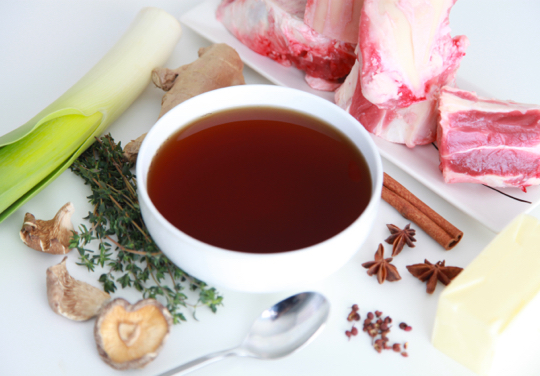 Bone broth has been getting so much buzz, it doesn’t need a lengthy introduction. By now, you probably know that sipping a warm mug of broth is not only soothing, but also a nourishing source of gelatin. So you keep a supply of bone broth in your refrigerator or freezer*. And you’re sipping mugs of it, and it’s soothing, and nourishing, and all that—but it’s also getting a little boring. Not because you don’t like bone broth. It’s just that you’re craving a little more flavor, a little more pizazz, a little something different than a basic mug of broth. Perhaps broth with the rich flavor of porcini mushrooms? Or the spicy kick of Sichuan peppercorns? How about of mug of broth laced with the exotic flavor of cinnamon, ginger and star anise, or the comforting flavor of butter and leeks?
Bone broth has been getting so much buzz, it doesn’t need a lengthy introduction. By now, you probably know that sipping a warm mug of broth is not only soothing, but also a nourishing source of gelatin. So you keep a supply of bone broth in your refrigerator or freezer*. And you’re sipping mugs of it, and it’s soothing, and nourishing, and all that—but it’s also getting a little boring. Not because you don’t like bone broth. It’s just that you’re craving a little more flavor, a little more pizazz, a little something different than a basic mug of broth. Perhaps broth with the rich flavor of porcini mushrooms? Or the spicy kick of Sichuan peppercorns? How about of mug of broth laced with the exotic flavor of cinnamon, ginger and star anise, or the comforting flavor of butter and leeks?
Luckily, after you’ve already gone through the lengthy process of making homemade broth, changing the flavor is easy to do. Each of the recipes below require 1 hour and just a few ingredients to transform a basic pot of beef bone broth into a whole new flavor experience.
*Wait, you don’t have a batch of homemade bone broth in your freezer? No problem. There’s a basic bone broth recipe at the end of this post.
Servings: Makes 2 quarts/2 L flavored broth
Time in the Kitchen: 1 hour
Beef & Mushroom Broth
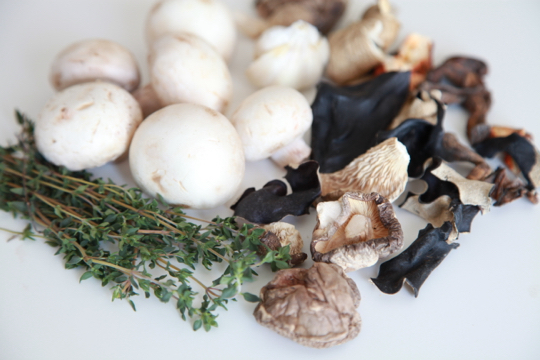
2 quarts beef bone broth (2 L)
1 tablespoon extra virgin olive oil (15 ml)
1 pound button or cremini mushrooms, quartered (450 g)
1 cup (about 1 ounce/28 g) dried mushrooms, rinsed to remove dirt and grit
4 garlic cloves, peeled and halved
2 sprigs fresh thyme
Heat olive oil over medium heat. Add the fresh mushrooms and garlic and cook until the mushrooms are soft, 5 minutes.
In a pot, combine the bone broth with cooked mushrooms and garlic, dried mushrooms and thyme. Bring to a boil then turn down heat and simmer 1 hour. Strain the stock and discard the solids.
If desired, stir a little crème fraiche into the warm broth before drinking.
Vietnamese Beef Broth
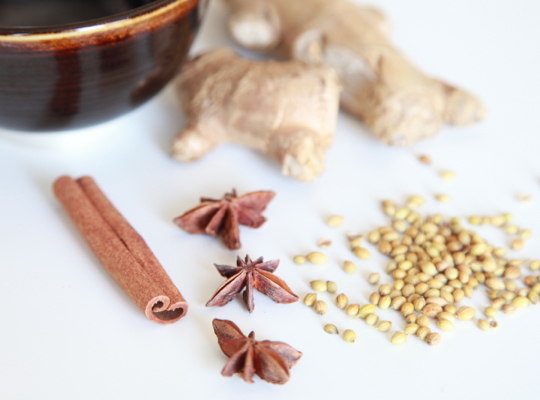
2 quarts beef bone broth (2 L)
3 inches ginger, peeled and cut in half lengthwise (7.6 cm)
1 cinnamon stick
2 whole star anise
2 whole cloves
2 teaspoons whole coriander seeds (10 ml)
In a pot combine the broth, ginger, cinnamon stick, star anise, cloves and coriander seeds. Bring to a boil then turn down heat and simmer 1 hour.
Strain the stock and discard the solids.
If desired, add 1 tablespoon (15 ml) each of fish sauce and coconut aminos to the pot of broth before serving.
Butter and Leek Beef Broth
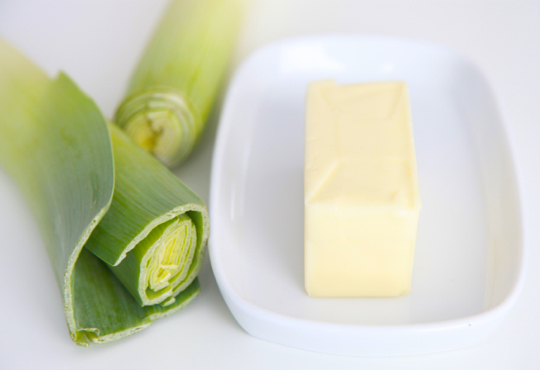
2 quarts beef bone broth (2 L)
2 leeks, cut in half and well-rinsed, bottom tips trimmed off
Salted butter (ideally, grass fed)
Roughly chop the leeks. Because the leeks will be strained out of the stock, use the tough dark green part as well.
Add the leeks to the stock. Bring to a boil then turn down heat and simmer 1 hour. Strain the stock and discard the leeks.
Right before drinking, add a tablespoon or so of butter to each serving of broth, letting the butter melt into the warm broth.
Peppercorn Beef Broth
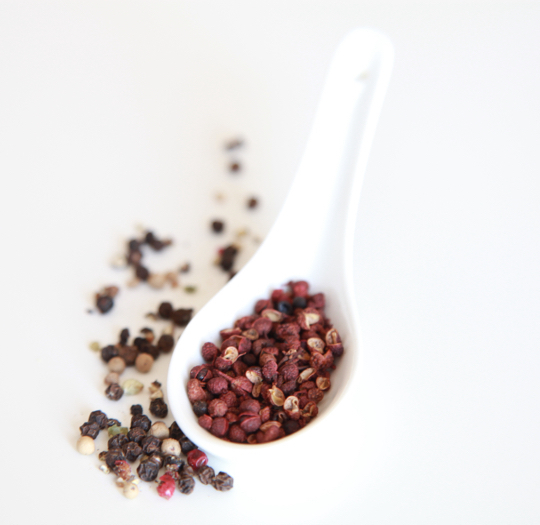
2 quarts beef bone broth (2 L)
2 teaspoons Sichuan peppercorns, crushed with the flat side of a knife (10 ml)
1 teaspoon black peppercorns, crushed with the flat side of a knife (5 ml)
Add Sichuan peppercorns and black peppercorns to the stock. Bring to a boil then turn down heat and simmer 1 hour. Strain the stock before drinking.
Basic Bone Broth Recipe
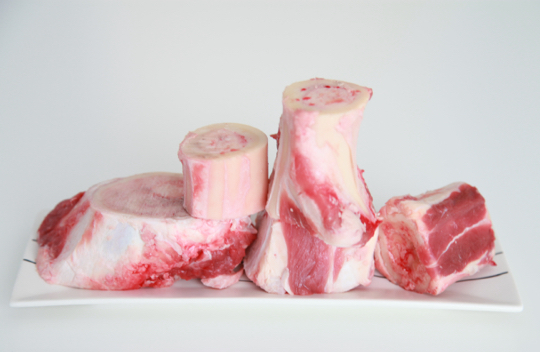
Ingredients:
3.5 to 4 pounds/1.6 to 1.8 kg beef bones. Any type of bones will do, but for the richest, most gelatinous beef broth, add some collagen-rich knuckles, tails, feet, or neck bones
2 carrots, chopped
2 celery ribs, chopped
1 onion, peeled and quartered
6 garlic cloves, peeled and halved
2 bay leaves
Water (about 4 to 6 quarts/4 to 6 L)
Instructions:
Optional: Browning the bones before simmering gives the broth a deeper, richer flavor, but it’s optional. Preheat oven to 375 °F/190 °C. Spread the bones out on a large roasting pan. Roast 30 to 40 minutes, until nicely browned.
Put the roasted (or unroasted) bones in a large stockpot or 6 to 8-quart slow cooker. Add carrots, celery, onion, garlic, bay leaves. Add enough water to cover the bones by an inch or two.
In a stockpot, simmer on very low heat, with a lid, for at least 10 to 12 hours, or up to 24 hours to extract the most nutrients and flavor, occasionally skimming foam and fat from surface.
In a slow cooker, cook on low for at least 8 hours and up to 24 hours.
The broth is done when it has a rich, savory flavor and deep reddish-brown color.
Pour broth through a strainer to remove all solid ingredients. Cool the broth quickly by pouring it into a shallow and wide container. When the broth has cooled, then cover and refrigerate. Use the refrigerated stock within several days, or freeze for several months.





February 26, 2016
Five Years After PCOS Diagnosis, I’m the Healthiest I’ve Ever Been
It’s Friday, everyone! And that means another Primal Blueprint Real Life Story from a Mark’s Daily Apple reader. If you have your own success story and would like to share it with me and the Mark’s Daily Apple community please contact me here. I’ll continue to publish these each Friday as long as they keep coming in. Thank you for reading!
 I’ve been debating sharing my story for over three years now! I’ve never felt like I was at a “good enough” point to submit it. I kept telling myself to wait just a little longer to share my story. I know I am far from “perfect”—but I also know that I have a lot of be proud of.
I’ve been debating sharing my story for over three years now! I’ve never felt like I was at a “good enough” point to submit it. I kept telling myself to wait just a little longer to share my story. I know I am far from “perfect”—but I also know that I have a lot of be proud of.
My journey started in 2010/2011. I was at an average weight, but I wasn’t my healthiest. I had serious digestive issues. I blamed my problems on lactose, as many people do. I recall having to run out of several college classes just to use the bathroom. I thought it had to be the big glass of milk I had at breakfast—I never could have imagined that whole wheat bagels and toast were the issue!
My symptoms only marginally improved by starting to avoid lactose. I thought that maybe this was normal, that maybe everyone had issues like this, and we just didn’t talk about it. I didn’t know how to get healthier—so I dabbled in vegetarianism, ate a ton of soy and a ton of grains for a few months. I actually felt worse!
At only 20 years old, I went to the OB/GYN complaining of irregular periods and weight gain. I had a history of ovarian cysts, I miserably failed a three hour glucose test, and my A1C was far too high. I also weighed my heaviest—178 pounds. I couldn’t believe that I could be so unhealthy at such a young age. I was incredibly confused. I thought to myself: “I’m not that overweight, how could I also be pre-diabetic? I’m eating how they say I should eat, why am I having so much trouble?”

These were really hard questions to answer. Luckily, I had a pretty proactive physician who referred me to a PCOS specialist. This wonderful nurse practitioner helped me learn to count my carbohydrates. While I wasn’t Primal yet, I was instructed to eat no more than 30 grams of carbs for every 3 hours, and to always pair carbohydrates with protein and fat. I was also put on Metformin, a diabetes drug. This approach helped me to lose about 20 pounds and get my glucose levels under control. It was a start, but it wasn’t good enough. I gradually become more proactive about my health and began to open my eyes to all of the ways I had been hurting my body with sugar and chemicals. I started to form healthier habits by quitting diet soda, reading ingredient labels, buying organic, etc.
 After about 10 months of carb counting, I came across Mark’s Daily Apple. At first, I was skeptical. I told my family and friends about it and they were pretty incredulous. I often heard the phrases, “But, you need ‘X’ amount of carbohydrates! You need grains! It’s too difficult!” Regardless, I jumped right into Primal eating. After a week or two, I’d never felt better. I lost more weight and realized that gluten was the culprit of my digestive distress. After a few months of Primal eating, I was able to eat dairy again, as my gut stopped being so irritated from so much gluten. I almost never have any digestive issues anymore—only if I eat out and somehow my meal is compromised. I even had my husband (fiancé, at the time), get on board and he loved it too. I also paired my eating style with lots of walking. By the time our wedding came around, I looked and felt pretty wonderful. I was certainly the healthiest I had ever been!
After about 10 months of carb counting, I came across Mark’s Daily Apple. At first, I was skeptical. I told my family and friends about it and they were pretty incredulous. I often heard the phrases, “But, you need ‘X’ amount of carbohydrates! You need grains! It’s too difficult!” Regardless, I jumped right into Primal eating. After a week or two, I’d never felt better. I lost more weight and realized that gluten was the culprit of my digestive distress. After a few months of Primal eating, I was able to eat dairy again, as my gut stopped being so irritated from so much gluten. I almost never have any digestive issues anymore—only if I eat out and somehow my meal is compromised. I even had my husband (fiancé, at the time), get on board and he loved it too. I also paired my eating style with lots of walking. By the time our wedding came around, I looked and felt pretty wonderful. I was certainly the healthiest I had ever been!

 Thanks to Primal, I was able to easily maintain my healthy weight even through tough times. Shortly after my wedding, my husband deployed and I started a stressful new degree program. I was thankful for my healthy eating habits to keep my body sane, even when my emotions and intelligence were pushed to their limits. Through this time, I even explored acupuncture therapy to help with my PCOS and irregular periods. I always thought I would have a hard time conceiving because of my medical history, so my husband and I both figured children were something we would consider in the distant future. Surprisingly, upon his return home I immediately became pregnant. Even more surprisingly, I became pregnant with twins!
Thanks to Primal, I was able to easily maintain my healthy weight even through tough times. Shortly after my wedding, my husband deployed and I started a stressful new degree program. I was thankful for my healthy eating habits to keep my body sane, even when my emotions and intelligence were pushed to their limits. Through this time, I even explored acupuncture therapy to help with my PCOS and irregular periods. I always thought I would have a hard time conceiving because of my medical history, so my husband and I both figured children were something we would consider in the distant future. Surprisingly, upon his return home I immediately became pregnant. Even more surprisingly, I became pregnant with twins!

Thankfully, I had a very healthy twin pregnancy and found a fantastic physician who agreed to my birth plan. I carried my girls until 36 weeks and five days, and had a very natural birth, free of pain medication and many of the common interventions. I gained 50 pounds and had two, beautiful six pound babies. I also have been committed to giving my twins the best Primal start possible—as we are now at almost 15 months of breastfeeding! I’m very thankful that they are adventurous eaters and love to try new things as well.

Despite what they tell you, breastfeeding alone did not help me lose the baby weight. About 25 pounds came off within the first week or so, but the rest lingered. I wasn’t following the Primal principles because I was too exhausted with two newborns to care for. I stayed strictly gluten-free, but wasn’t eating as clean. I didn’t feel like myself and it was a very difficult time. To add insult to injury, we experienced a very stressful move—4,000+ miles to Hawaii with two, 4-month-old infants. I struggled with my postpartum image severely. Feeling great had become pretty effortless prior to becoming pregnant, and this was a whole new challenge that I needed to conquer.

Come July 1, 2015, I decided I was going to get serious about exercise. I started doing CrossFit-type workouts in my garage during the twins’ nap time. At first, it was very difficult. I could barely do air squats and lunges, I felt so incredibly weak. However, for the first time in my life I really wanted to dedicate myself to getting stronger. I felt really empowered after becoming a mother, and luckily had my husband coaching me through. I kept with my workouts five to six days a week, usually mixing it up between crossfit WOD’s, boxing, and a stroller mom’s running group. Seven months later, I never thought I’d be able to do any of the crazy things I’m doing now! We also recently started adding in intermittent fasting with great results. I am stronger and faster every single day and I’m happy to be healthy and fit enough to chase around my two, one-year-olds. I may always have my stretch marks and a little extra skin from carrying two babies, but I’m trying to be the strongest and fittest version of myself.

Thank you, Mark, for doing what you do. I’m so grateful I stumbled across your site in 2012. It has been a great 3+ years of healthy living, and I hope I can inspire others to stick with it and always strive to be their best, no matter what challenges they may encounter.
Ashley




February 25, 2016
Primal Rage: How to Manage Unproductive Anger
 If you ask the average person on the street to list “primal emotions,” I’d venture that anger would be one of the first examples they offer. I think we automatically connect a primal state with anger because anger’s power is more reminiscent of instinct than sentiment. It’s an emotion that can instantaneously engulf our entire being—a red hot feeling that can send all rational thought and genuine self-interest down the toilet in a nanosecond. While other emotions have their physical hold, anger can grip us in a way few others can. Fear, the other primary instinctual emotion, generally lifts with a clear, even euphoric release (as long as its situational, not a product of neuroses). Anger, however, doesn’t die so easily. Like the embers in a fire, it needs ample time to fade. The visceral energy of anger is remarkably durable. We kid ourselves if we think we’re immune to its inherent human force. That said, how can we keep it reined in enough to not thwart our own well-being (not to mention anyone else’s)? How can we control or manage it—even channel it? In short, how can we have and express anger without getting burned by it?
If you ask the average person on the street to list “primal emotions,” I’d venture that anger would be one of the first examples they offer. I think we automatically connect a primal state with anger because anger’s power is more reminiscent of instinct than sentiment. It’s an emotion that can instantaneously engulf our entire being—a red hot feeling that can send all rational thought and genuine self-interest down the toilet in a nanosecond. While other emotions have their physical hold, anger can grip us in a way few others can. Fear, the other primary instinctual emotion, generally lifts with a clear, even euphoric release (as long as its situational, not a product of neuroses). Anger, however, doesn’t die so easily. Like the embers in a fire, it needs ample time to fade. The visceral energy of anger is remarkably durable. We kid ourselves if we think we’re immune to its inherent human force. That said, how can we keep it reined in enough to not thwart our own well-being (not to mention anyone else’s)? How can we control or manage it—even channel it? In short, how can we have and express anger without getting burned by it?
Evolutionarily speaking, anger is the stuff of warfare, murder, revenge and sabotage. And, yet, it’s also the boundary setter. Watch even the most devoted mother dog with her pups, and eventually she’ll offer a snarl if one gets too annoying or if she needs a rest.
At its best, anger is a self-protective instinct. We warn those who would try to mess with us or our kin to back off—and most socially astute, reasonable people (and even many animal predators) will retreat in the majority of situations. Anger, in this way, is part of the “checks and balances” system inherent to our social contracts. Of course, it doesn’t always result in retreat (nor should it). But the feeling and show of anger acts as a deterrent for another person or group, reminding the other party that their own aggression will be met with consequences. It can (or should) give the other party pause to consider whether it’s really worth provoking a particular exchange.
Although violence is undoubtedly part of our primal history, actual pre-agricultural band society would not have experienced the same impetus toward group warfare. Living with an economy of immediacy in which possessions were few and the “spoils” of the hunt were more or less equally shared among members within the moment (rather than stored and hoarded—or stolen—by a few members) offered little reason for large scale conflict. Bands were also relatively fluid with exchange and intermarriage of members at any given time.
That said, it’s inevitable that people broke the egalitarian code at various points or that a certain group encroached on another’s territory. People assuredly fought over mates or the band decisions. Anger at other people, at predators (you killed my son), and even at oneself (boy, that was a dumb move) would’ve been a natural and ingrained response to protecting what a person perceived as rightfully his/hers (e.g. one’s child, an opportunity lost through one’s own stupidity). The larger and more unjust the considered slight, threat or stumble, the more anger would’ve been evoked.
The job of the “selfish gene,” after all, was to preserve and promote one’s own survival and the survival of one’s kin. Even if a relatively small scale, egalitarian social structure often kept conflict from boiling over, the instinct to protect and secure one’s place would’ve called for anger as an impetus for mobilization. In that way, anger is assuredly one of the most directly practical emotions. It has essential purpose and may be, generally speaking, a natural set point (although research has shown some individuals are genetically more prone to direct physical aggression).
Fast forward to modern day, and it can seems like anger is the scourge of human nature. And, yet, I wonder how magnified our anger is by the conditions of our society, many of which are so starkly incongruent with our evolutionary circumstances. Most of us live without the regular threat to life and limb that our ancestors endured, but we live with plenty of other complaints—everything from “minor” daily disturbances to various global injustices.
When we each think of what overstimulates us (e.g. noise, work, other people in our space, exposure to negative news/media), for example, we start to get annoyed, then agitated and finally (if we achieve no sense of relief) angry. Those of us in more densely populated areas may feel this more often.
Add to this, as I’ve talked about many times before, most of us also have much less leisure time than our primal ancestors had. We tend to be overworked on the family (no tribal parenting for us) as well as job fronts. On top of it all, most of us are going on less sleep than we should be. There’s a recipe for anger if I ever heard one.
But even if we feel we can roll with the big layers of our daily life, too often it becomes a case of the straw that broke the camel’s back. Our 7-year-old leaves the gate open, and now we’re chasing the dog around the neighborhood. Our teenager walks in the door an hour after curfew. Our partner forgets to put the gutter extension on after mowing, resulting in a flooded basement during a heavy rainstorm the next day. Our boss completely discounts our contribution to a major project and doesn’t offer what we perceive to be our due credit and raise. Despite our best “serenity now” efforts, anger floods the emotional plain.
How do we deal with anger? What do we do with this naturally occurring emotion when it’s not a matter of survival?
Tips for Managing Anger (So It Doesn’t Manage You):
1. Practice mindfulness, and bring that deep awareness to anger when it rises.
This isn’t about leaving society to live in a monastery or a cliffside somewhere. It’s simply about being cognizant of what you’re feeling and how those feelings unfold in you. To do this, we learn to stop identifying with our feelings and come to observe them instead.
2. Get back in your body while you’re at it.
Use the awareness to feel yourself become flushed in the face. Notice the blood retreat from your extremities. Sense the emotional force rising in our abdomens or pulsating in your forehead. Then breathe into those sensations, disarming each before they take off into uncontrolled rage. With practice, we can nip anger (when we deem it unproductive) in the bud by not trying to manipulate ourselves emotionally but by putting our full focus on physical “symptoms” and addressing those.
3. Make sure what you’re feeling is truly anger.
Sometimes we get in the habit of distorting our emotional responses to avoid feeling what is most uncomfortable and unacceptable to us. Perhaps we won’t let ourselves feel fear, or we’re afraid to plunge into the depths of grief or regret. So, we morph the big feelings into anger, which doesn’t feel as vulnerable. We might think we’re saving face in some imagined way, but we pay for it on the other end by hanging onto an unfelt, unresolved emotion. So take some inventory to make sure your anger isn’t really a proxy for something else.
4. Keep your tank full.
This might mean saying no to a lot of demands in order to take care of yourself. It might mean getting honest about the effects of your lifestyle choices (e.g. the toll of that hour-long commute) and finding other work or moving. It can mean getting outside more or rediscovering a pastime you love. It can mean getting the sleep you need and taking your allotted vacation. Whatever it is, making sure you’re not burning your candle at both ends can help prevent a blowup.
5. Pursue risk and euphoria.
Modern life can keep us peaceful—or subdued, depending on how you look at it. Some folks do well with this, while others just don’t. Your quick temper might be a sign you’re not getting your thrills from the physical risk and adventure you inherently crave. Anger is a big, bold feeling, but it’s not the best direction for that heightened emotional intensity. Move that energy productively by trying a little intermittent euphoria on for size, and see how much better you are at keeping the peace in the rest of your days.
Thanks for reading, everyone. How have you learned to manage your anger? What role does it play in how you operate day to day?




February 24, 2016
17 Primal Tips for Vegans and Vegetarians
 We all know vegetarians and vegans. And while we have our differences, they are our friends, our family, our partners, our spouses, even our children. We all have people in our lives who avoid meat and/or animal products in general for multiple reasons—health, ethics, the environment, squeamishness, animal welfare—but we care about them. We also subscribe, with varying degrees of rigidity, to an eating philosophy based on the nutritional importance of animal foods. How do we reconcile these competing loyalties? Should we give up on them? Are they a lost cause? Should we simply wait for them to come limping toward us with sallow skin and low muscle tone? I kid, of course. We should absolutely help where and when we can.
We all know vegetarians and vegans. And while we have our differences, they are our friends, our family, our partners, our spouses, even our children. We all have people in our lives who avoid meat and/or animal products in general for multiple reasons—health, ethics, the environment, squeamishness, animal welfare—but we care about them. We also subscribe, with varying degrees of rigidity, to an eating philosophy based on the nutritional importance of animal foods. How do we reconcile these competing loyalties? Should we give up on them? Are they a lost cause? Should we simply wait for them to come limping toward us with sallow skin and low muscle tone? I kid, of course. We should absolutely help where and when we can.
Yet telling them to “just eat meat” doesn’t work. If anything, it’s counterproductive. Instead, we can offer productive, legitimately helpful advice from a Primal perspective. Like:
1. Eat real food.
Don’t waste time with fake meat products and vegetarian junk food. Skip the Tofurkey, the boca burgers, the canola-infused mock chicken nuggets, the facon, the mockeroni. Because if you’re willing to eat that dreck just because it vaguely resembles real meat, you should probably just listen to your body and eat the actual meat.
2. Don’t be a pastatarian; eat plants.
These are the vegetarians and vegans who subsist almost entirely on pastas, rice, boxed foods, pre-prepared foods, bread, crackers, and crispy grain-based foods.
They’re not eating the voluminous salads. They’re not whipping up homemade hummus and complex lentil stews with a million spices. They’re not eating anything close to a “traditional” vegetarian diet. Rather, they’re eating the easiest most refined junk food that technically qualifies as “plant-based.”
If you call yourself a vegan or a vegetarian, act like it. Eat actual plants. Plants are incredible, delicious, nutrient-dense, and varied. You claim to be about them. You should actually eat them.
3. Avoid refined seed oils.
Don’t eat soybean oil, corn oil, canola oil, sunflower/safflower oil. These are all heavily refined, high in omega-6 fats, easily oxidized, and stripped of their nutrients.
Instead, eat extra virgin olive oil, red palm oil, coconut oil, high-oleic sunflower/safflower oil, grass-fed butter/ghee (if you do dairy), macadamia oil, and avocado oil.
4. Go grain-free.
You don’t need the grains, and being vegan or vegetarian doesn’t absolve you of the potentially harmful effects of consuming them. On the contrary, the increased reliance on grains for your calories and nutrients may even increase the harmful load of antinutrients you consume.
Okay, Sisson, what the hell am I supposed to eat if not grains? You’re right, except for potatoes, legumes, sweet potatoes, bananas, apples, blueberries, strawberries, pears, taro, cassava, tigernuts, and a thousand other foods, there’s no way to obtain carbohydrates, minerals, protein, fiber, and vitamins without eating grains. Scratch that suggestion.
5. If you do eat grains, eat sprouted grains.
Most vegetarians and vegans are going to eat grains. I accept that and submit that sprouted grains are the superior choice. Why?
Sprouting increases the nutrient content, including soluble fiber, folate, vitamins C and E, and various antioxidant compounds.
Sprouting reduces the antinutrient content, including gluten, phytic acid, various enzyme inhibitors, and tannins.
6. Eat fermented soy.
Many vegans and vegetarians turn to soy to replace the protein they’re not getting from animal products. This makes sense and, contrary to popular belief, studies indicate that soy protein is decent (though not as good as animal proteins like whey or egg) at maintaining physical performance. So I’m not going to tell you to stop eating soy.
But make sure some of it’s fermented. I’m talking about natto (which contains a huge amount of vitamin K2, another vital vitamin usually found in animal foods like eggs and liver), tempeh (which has reduced levels of mineral-binding phytic acid), stinky tofu (which contains beneficial bacteria known to ameliorate intestinal inflammation), and soy sauce (which has elevated levels of antioxidants and little to no residual soy proteins or gluten). In general, fermenting soy unlocks the isoflavones, making them and their purported health benefits actually bioavailable to humans.
7. Eat eggs and dairy.
As long as you’re willing to eat eggs and dairy, you’re good on most nutrients you’ve been missing. Pastured eggs have choline, omega-3s, DHA, protein, cholesterol, vitamin B12, and many other vital nutrients vegans and vegetarians typically lack. Contrary to popular belief, eggs do not increase cardiovascular risk (not even in vegetarians). Pastured dairy has saturated fat, omega-3s, CLA, calcium, protein, and probiotics (if fermented), and the full-fat stuff is consistently linked to good health.
For nutritional completion, a good mix is eating both DHA-enhanced eggs (typically attained by adding algae to the hens’ feed) and pastured eggs. Most health food stores will have both.
And vegans, I know you’re opposed to eating eggs and dairy. I get it. But do consider raising your own chickens or goats or getting eggs and fresh dairy from someone you know and trust to be a faithful and ethical steward. They really aren’t going to miss all those unfertilized eggs or that extra milk.
8. Consider oysters.
Oysters have no central nervous system. Like plants, they respond to environmental conditions and stimuli, but there is no central brain conducting operations and perceiving sensations. As such, I see no logical reason for ethical vegans and vegetarians to avoid eating oysters. They’re not being harmed, because there’s no consciousness present to perceive harm and take umbrage. Even longtime animal rights activist Peter Singer suspects oysters feel no pain and once actively endorsed their consumption.
Also, oysters are the greatest source of zinc on the planet. Zinc is tough to get from plant foods. They’re also rich in vitamin B12, also absent in plant foods.
9. Consider insects.
Don’t lie. You smash mosquitoes, spiders, and other assorted creepy crawlers that invade your pristine home and threaten your supply of sprouted rice cakes. Why not take the next step and eat the things?
While I’m unaware of mosquito-based foods, there are some damn tasty cricket bars out there on the market which provide ample protein, pre-formed vitamin A, iron, and vitamin B12.
10. Consider protein powder.
Whey is my favorite (obviously) and the most effective. So if you do dairy, throw some whey isolate in there for the most bioavailable protein available. If not, you’ve got other options, like egg white protein, rice protein, or hemp protein (which also gives you fermentable fiber and some omega-3s).
11. Take vitamin B12.
I’m serious, guys. Don’t believe the hype. No, your incredible vegan gut bacteria aren’t synthesizing enough vitamin B12 to keep you replete. No, your spirulina smoothies don’t really contain enough B12 to get you by; you’re actually consuming a pseudovitamin B12 that increases the need for real B12. You are at risk for deficiency and you do need to supplement with B12 or eat foods that contain it because it is that important for cognitive, cardiovascular, mental, autoimmune, sexual, and cancer health.
Don’t assume you’re replete in B12 unless you’ve taken the latest assays, which are more sensitive than normal serum B12 tests. According to normal serum tests, 52% of vegans and 7% of vegetarians are deficient. According to the newer, more sensitive tests, 92% of vegans and 77% of vegetarians have low levels of the active form of vitamin B12. Here’s a good one.
12. Take creatine.
Creatine is mostly found in skeletal muscle so if you want creatine from the diet, you have to eat things that have muscle, like meat and fish. Human muscle contains creatine as well, where it’s used to fuel muscle and help recovery during training by recycling ATP (the basic energy currency of the body). Creatine is also found in the brain, where it maintains cognitive function. Studies show that vegetarians who supplement with creatine enjoy improved cognition and physical performance. Vegan brains and muscles, which have even less (small amounts of creatine are present in eggs), should benefit even more from supplementation.
Creatine monohydrate is cheap, widely available, effective, and doesn’t come from actual animal flesh. There’s no reason for vegans and vegetarians not to take it.
13. Take carnosine.
Carnosine is a fusion of two amino acids (beta-alanine and histidine) and is found abundantly in meat. You don’t hear much about carnosine (except in certain Asian countries, where chicken extract is a popular carnosine supplement used as a mood enhancer that actually works), but it’s important and vegetarians/vegans should supplement it. Why? After all, carnosine isn’t essential; we can synthesize it.
It turns out that vegans and vegetarians tend to have lower levels of carnosine. Since the compound is linked to muscle endurance and acts as an antioxidant in the brain, it’s probably a good idea to top yourself off. Try this one.
14. Take taurine.
Taurine is similar to carnosine: it’s not essential (we make it, just probably not enough), it appears only in animal foods, and it plays a major yet under-appreciated role in preventing death and disease.
This is a good supplement to take.
15. Take algal oil.
DHA is perhaps the most important long chain omega-3 fatty acid. You can make a bit from ALA, which is found in plant foods and grass-fed meat, but it’s unclear how reliable the ALA-DHA conversion rate is in humans. Since vegans and vegetarians tend to be deficient in DHA, I suspect the conversion is rather poor. Good news is that you don’t have to slaughter and consume fish flesh to get DHA. You can get it from the same source marine animals get it: algae.
This is still a fairly new product and the human research is preliminary and scant, but algal oil improves blood lipids and increases blood levels of EPA (another long chain omega-3 found in fish oil). I suspect it’s a good substitute for fish fat. Try this one.
16. Consider pescetarianism.
Among all the plant-based groups, pescetarians appear to be the healthiest, beating vegans, vegetarians, and lacto-ovo-vegetarians when it comes to mortality risk.
My wife was a pescetarian for decades before adding meat to her diet, and she’s always been the fittest, healthiest person I know.
17. Consider peganism.
No, not Norse god worship. Peganism—veganism with a smattering of paleo. It involves mostly eating plants and treating animal products like meat, eggs, shellfish, and organ meats as essential condiments, supplemental foods that provide the nutrients you simply cannot get—but as a human still require—from plants. This is a growing dietary movement popularized by Dr. Mark Hyman. In my opinion, our good friend Denise Minger is the best example of a successful pegan dieter. Consult with her for a more detailed plan of attack.
You don’t have to adopt all these suggestions (except for taking vitamin B12). But doing even a couple will markedly improve your health and long term outcomes. More importantly, it will allow you to continue eating the way you’ve chosen without compromising your beliefs or values.
Thanks for reading, everyone! What other recommendations do you have for vegans and vegetarians?
Like This Blog Post? Subscribe to the Mark's Daily Apple Newsletter and Get 10 eBooks and More Delivered to Your Inbox for FREE



Mark Sisson's Blog
- Mark Sisson's profile
- 199 followers



